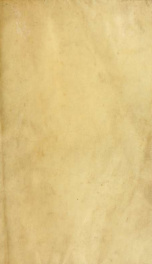Diario del viaggio del Card. Pietro Aldobrandino nell'andar Legato Apost.co a Firenze per il sponsalitio della regina di Francia e doppo in Francia per la pace after 1632

Unpublished manuscript, folio format, foliated from 12 to 333 (fol. 279 repeated), starting with the title page on folio 12 recto; written on both sides in professional hand; with 24 marginal notes in light brown ink by Giov. Bandini, a diplomat in Aldobrandini's service 17th century flexible full vellum binding; on the spine, in brown ink, "Viaggi de' Card. Alessandrino Aldobrandino con note di D. Giov.i Bandino," and shelf mark CXXI in same ink; two other shelf labels pasted on spine; bookplate of Giannalisa Feltrinelli on the front pastedown. Modern pencil inscriptions on front and back endpapers; one on the front reads: Phillipps Ms. 6046. The title page (fol. 12) is the first leaf of the second fascicle. The first fascicle of 11 numbered leaves has been extracted since the Phillipps sale in 1913 (cf. Robin Halvas) There were a number of copies of Agucchi's diary in the libraries of the principal Italian families (now migrated mostly into public collections), the prototype version being considered the one at the Vatican (cf. Robin Halwas) Robin Halvas ltd. Catalogue Four The diary begins with a presentation of the political circumstances which motivated the diplomatic legation of the cardinal Pietro Aldobrandini. Its main objectives were the wedding of Maria de Medicis to the King of France Henry IV by proxy in Florence, followed by the marriage festivities in Lyons and the diplomatic negotiations for the peace treaty between France and the Duchy of Savoy. Giovanni Battista Agucchi was assigned to the cardinal's suite on behalf of his ailing older brother Girolamo as secretary in charge of his correspondence and of the travel account. The diary starts on 16 September 1600 with the departure of the legation from Rome. At every stop in a city, Agucchi sends also an account to his brother. Two weeks later, his papers are damaged in an accident while crossing the Alps towards Turin. He describes the accident and notes his decision to stop writing the diary and to continue sending his brother the travel accounts by messengers. He will send the damaged papers to Rome, and try to restore them after his return, when he will also integrate the original letters to Girolamo into the diary (fol. 83). The text continues to flow as an uninterrupted narration, in which the 34 letters are identifiable only by the bold date in their closing line. The last letter is dated from Rimini, on March 23, 1601 (fol. 327 verso). The author notes his decision to revert to hasty diary notes, some of which might have been written after his arrival in Rome on April 3rd, after a trip of six months and nine days Giovanni Agucchi was a clergyman, a member of the Accademia dei Gelati in Bologna, an erudite antiquarian and an art theorist. Interested in mathematics and astronomy, he corresponded with Galilei and wrote a treatise about comets Provenance: Sir Thomas Phillipps collection, Ms. 6046. Sold at Sotheby's, London, May 23, 1913, lot 1091. Giannalisa Feltrinelli collection, Ms. 95
Info about the book
Series:
Unknown
ISBN:
1113387106
Rating:
4.5/5 (3)Your rating:
0/5
Languge:
English
Users who have this book
Users who want this book
What readers are saying
What do you think? Write your own comment on this book!
write a commentif you like Diario del viaggio del Card. Pietro Aldobrandino nell'andar Legato Apost.co a Firenze per il sponsalitio della regina di Francia e doppo in Francia per la pace after 1632 try:
Do you want to read a book that interests you? It’s EASY!
Create an account and send a request for reading to other users on the Webpage of the book!

